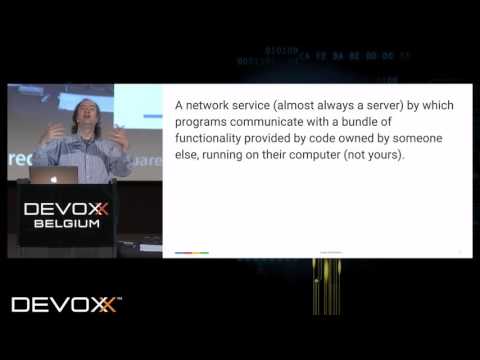Reactive programming is the new hit: applications work with a non-blocking, asynchronous programming model. Use of multi-threading is none or very limited. The reactive program responds to messages or events that come in via callbacks. These messages must be handled as quickly as possible, never blocking themselves while being processed.
Made me think of a fun project I was involved with in 1999 and 2000: "GSL", the Generic Service Layer" at Rabobank. We developed an integration layer (by Gartner defined as a "Super API") based on the message passing product
Netweave. And this product was completely based on callbacks and a reactive programming model.
Pre-dating XML and with maximum message buffer size of 32K on CICS, we defined our own message format. The messages had a tree structure in a proprietary, textual format. The GSL API allowed the creation, sending, receiving and parsing messages.
All the main platforms were supported: IBM CICS, Tandem (Guardian), AIX Windows NT and AIX. Communication was supported in all directions. So yes, a COBOL CICS program could invoke an ActiveX component on Windows. Code was written in C (and bit of C++). Most often the IBM mainframe and Tandem would be the actual servers.
An old code snippet from those days. This piece of C code writes a buffer back to a client application.
void loclSend(client_t * pClient, size_t szBuf, char * pBuf)
{
NWDS_ERRNO retcode ;
NWDS_CALL_BACK complete ;
/* write data to client process */
complete.procedure = loclSendComplete ;
complete.context = (NWDS_CONTEXT) pClient ;
retcode = nwds_ipc_write(pClient->hLocl
,(NWDS_SIZE) szBuf
,(void *) pBuf
,NULL
,&complete) ;
if ((retcode == NWDS_PENDING) ||
(retcode == NWDS_SUCCESSFUL))
lcTraceHdr('I', 'S', pBuf, szBuf) ;
if (retcode != NWDS_PENDING)
loclSleepCallback(&complete,retcode) ;
}
The write of the buffer is executed with
ndws_ipc_write. This write could return immediately, whereby
NDWS_SUCCESSFUL would be returned. But most often, the return code would be
NWDS_PENDING. Then the callback function
loclSendComplete would be registered and executed when the write was finished. The
complete.procedure element contains a pointer to the
loclSendComplete() function.
